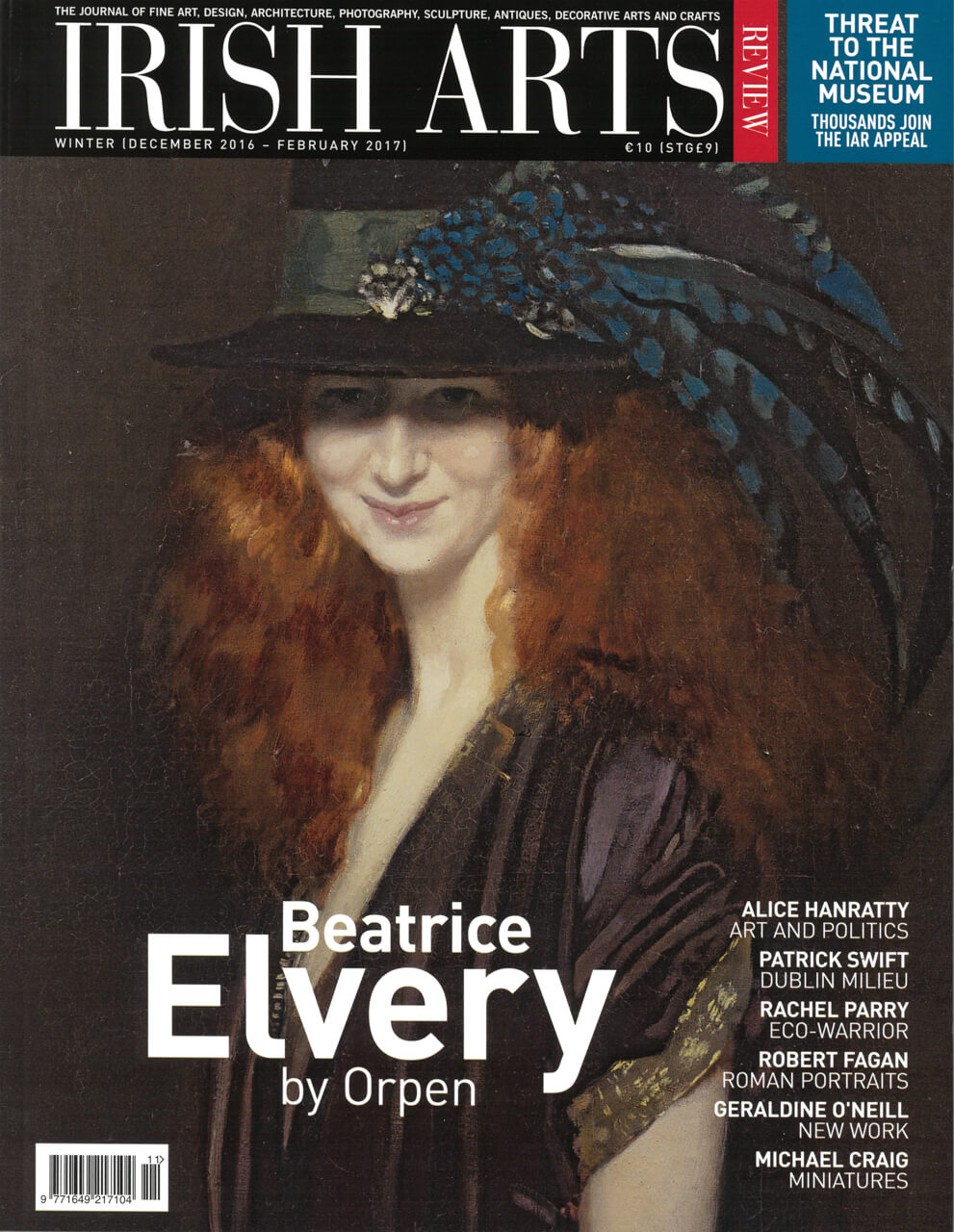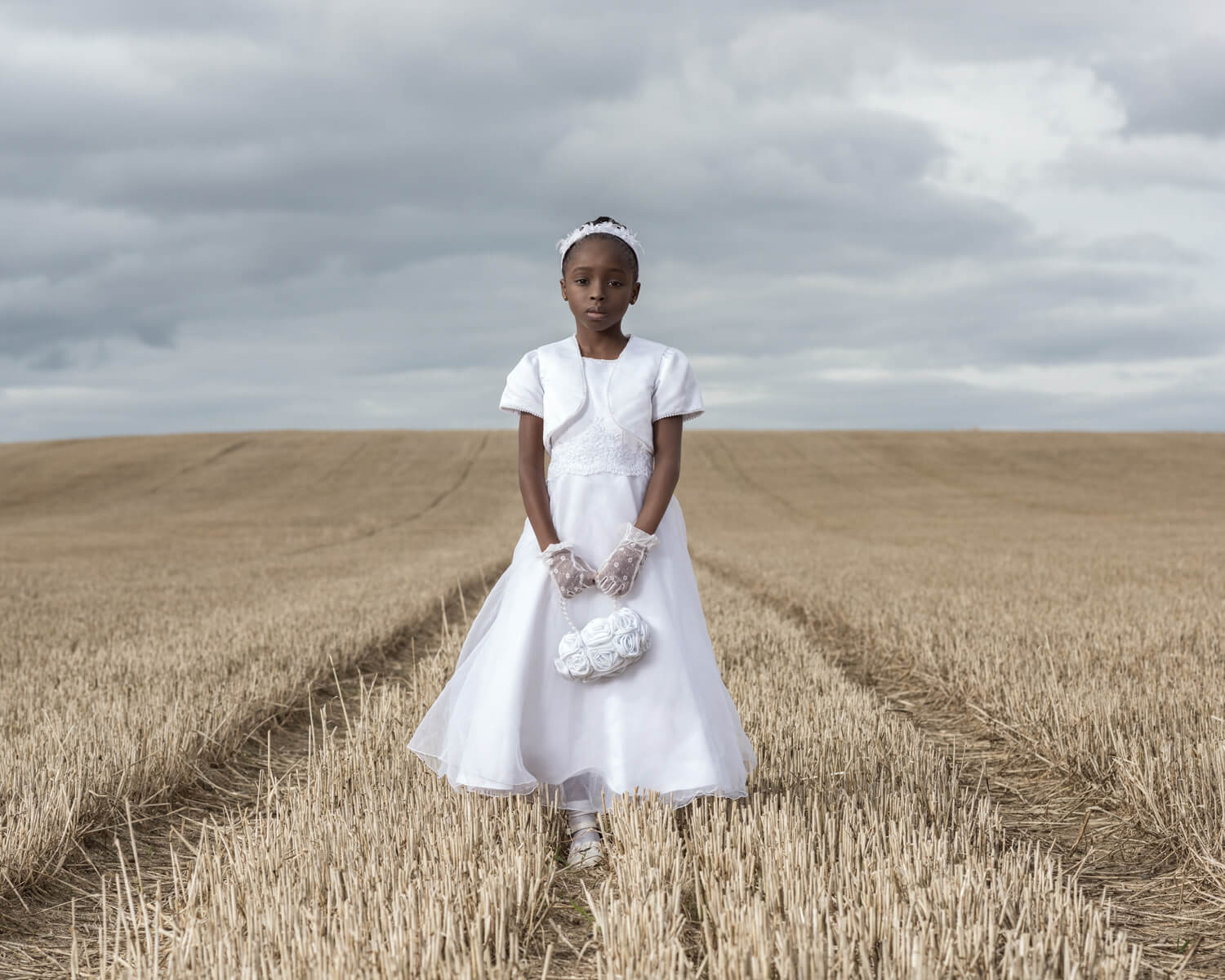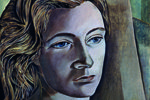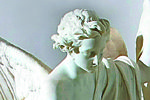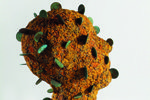
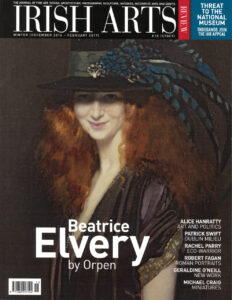
Mark Ewart visits the studio of Allihies-based artist Rachel Parry who transforms natural matter into mesmerizing art.
The Beara peninsula is unquestionably one of the most captivating parts of the country. Its raw and rugged landscape is dotted with quaint farming and fishing communities that have welcomed (or perhaps tolerated), a vibrant eco-system of artists and artisans. Places like Castletown-Berehaven and Allihies, sustain a thriving network of festivals, residencies and exhibitions; overcoming any preconceptions that the area’s physical isolation, precludes engagement with the arts.
Despite this public interface, Beara’s lifeblood is the allure of its physical landscape and the ‘perfect isolation’ it offers resident and visiting artists. Spectacular arcades of rock seem to demarcate or frame the human dimension, resonant as it is, with traces of the Great Famine and a confluence of ancient crafts, superstitions, religion and mythology. Nature is to be feared and respected in equal measure and it is here, in this richly contemplative space, that Rachel Parry makes her artwork.
The Cambridge-born artist’s beautiful and beguiling sculptures, seamlessly synthesise the ebb and flow of nature’s rhythms and the vagaries of human existence. She harvests what has been washed up by the sea, blown in by the wind or written into our histories. The carcasses of birds, animal skins and aquatic life – both local and imported – are synonymous with much of what she has created since making Allihies her home in 1978.
Nature is a ‘humbling’1 experience for Parry and she receives its offerings with the utmost of respect, breathing new life and narratives into what otherwise, would have simply returned to the Earth. This sensitivity in selecting and adapting materials evokes something of the Dadaist versatility for creating art from the everyday. The process of ‘making’ is central to the work where subject/concept/material are ‘locked into each other’. At times the material arrives unexpectedly and by pure chance, spurring a new direction. Conversely, a concept or text initiates a search for a specific object; for instance, an ostrich egg or weighing scales.
Like many other artists, Parry judiciously picks her way through nature and anthropology, cumulatively learning to covet and discard as she goes. Dutch environmental artist Herman de Vries seems here to have relevant parallels to Parry’s own development as an artist. De Vries’ early minimalist White Paintings from the mid 1950s (which took inspiration from Zen Buddhism) transitioned under the influence of Kurt Schwitters, in an exploration of collage and found objects. Such work was pivotal in finding value in the things scattered in the forest or found on roadsides, ‘playing with used, thrown away, weathered parts of reality‚Ķ’2 became key to his subsequent artwork. An echo of what motivates Parry also. One of the most evocative examples of Parry’s custodianship of natural objects can be seen in Lillith, from 2008. Based on Judaic and Sumerian mythology, Lillith (Adam’s first wife before Eve) is represented by an owl/woman hybrid – its defiant and impish expression communicated by a cheeky dart of its tongue. The artist’s brother living in Norfolk, happened upon the misfortunate creature as it ‘died in his arms’3 later giving the owl to his sister, aware surely that she would treat it with deference. There is an undoubted fluency to this process, where human hands paid homage to the inimitable beauty and structural complexity of the creature, so much so that perhaps its spirit lived on.
The historical precedent for using real animals in art reached its apogee in the Victorian era, when the phenomena became eminently fashionable. Late 20th-century Post-Modernism revived this interest when ‘botched taxidermy’ seeped into the public consciousness, as various artists coalesced under Damien Hirst’s notoriety. Questions surrounding animal rights and activism added further ethical issues, but ultimately according to Steve Baker, it was the use of animals as materials that defined the artwork of the period. The predilection seemed to ‘‚Ķcreate knowledge, or at least encourage open and imaginative thought’4 Parry’s attentiveness to the animal itself however is largely celebratory, as opposed to the overtly political forms favoured by others.
The passage of time seems almost by default to become part of Parry’s working process. The slow gathering of found materials/objects – makes by comparison – the convenience of mass-produced art materials, seem somewhat banal. In Veil from 2001 (Fig 3), Parry collected spider webs which were then spun and woven into a life-size garment, exploring themes of healing, sexual subservience, dominance and power. Amazingly the web was inculcated with the smell of cricket pavilions, barns and sheds from which they were collected – imbibing the materials used in the work with strains of nostalgia and reminiscences of her father – who was an archaeologist. She ponders still that ‘If people find out that I have spent two years making one piece of work they often don’t quite know what to say. I get the feeling they sometimes wonder why I bother. It’s definitely not a capitalist mentality‚Ķ’
Home and studio for the artist is a renovated farmhouse a short drive from Allihies village. It’s an idyllic place to live, set amongst a rock-garden that protects the enclave from the very worst of the weather. She is married to ceramist Cormac Boydell and the couple first met during a workshop in Transcendental Meditation – later – raising a family and helping establish the local visual arts community (Charles Tyrrell and Tim Goulding live nearby).
Having originally studied painting at Goldsmiths College, London, Parry continued her art practice with little fanfare or fuss, instinctively eschewing self-promotion along the way. And while her first solo exhibition was in 2009, there was still a significant history of meaningful and important artwork from before that date. Some of it was largely concept-driven, modifying an existing object rather than rendering sculptural form through modelling or carving. She juxtaposed found objects and moulded casts, musing on a range of themes including; the ageing process, celebration of womanhood, exploration of divinity and occultism. In her own words, the work was ‘more about the edgy side of being a human being’.
While Parry no longer has an affiliation with the TM movement, it is temping to see an inextricable link between her art and meditation – especially when one considers just how attuned she is to her themes. ‘The making process can take me to a very still, timeless place‚Ķ I’m not sure that this is quite the same as sitting doing absolutely nothing or meditating though, because my mind is pretty busy…. decisions being made, remade or abandoned’. She reflects that any discussion on the topic is not straightforward, ‘I think it is impossible ‘not’ to be spiritual‚Ķ’ she says – ‘it’s part of life and of who we are. It’s hard to nail it down but don’t we all have spirit as well as a mind and body? I guess my experience is that there seems to be something in me that is just aware…that has a quality of peacefulness and a kind of gentle detachment’.
Just like the long-departed copper miners who toiled in the mineshafts beneath Allihies, the continual process of searching for elusive precious things is for Parry, part of the alchemy of creativity. She has an admiration for the work of Dorothy Cross and Alice Maher (‘I do think they are both wonderful artists’) who similarly dig down into their subject matter to find truth and meaning. However, it is in keeping with her own studiously understated place in the Irish art scene, that Parry looks more to Outsider and Primitive artists. Inuit carving and ritual objects from Melanesia are a particular inspiration, explaining, ‘I love the work in folk museums and the Musée du quai Branly, Paris, is a favourite. Although I’m horrified that it is in fact ‘loot ‘. I find it a totally amazing, wonderful and inspirational collection’.
While Parry embraces empirical and experiential processes, she also calls on traditional skills of armature building to help create forms made from clay, wax, plaster; wood, cast paper and glass. The art-object can convey an allegory or secular parable that encourages reflection on topics and themes that express personal emotions as seen through the lens of social mores. In Sometimes Feelings Seem Very Real (Fig 4) four ‘inside-out’ portraits use traditional crafting techniques of felt-making and appropriation of turf, weathered coins and wasp nests, to explore Irish heritage and cultural identity. Whereas in So he Gave his Wife a Beautiful Pair of Silver Hands, a European folk tale (extricated by writer Drusilla Modjeska) evokes the macabre and transformative allegory of a man who is forced to cut off his own daughters hands in order to honour a pact made with the devil.
Her most recent show last year at Uillinn: West Cork Arts Centre, Skibbereen, was the first artwork she created that most deliberately zeroed in on spiritualism rather than humanism – notwithstanding her background as a meditation teacher. This paper sculpture and drawing installation piece was a reinterpretation of a painting from 1823 attributed to the artist Bulaki as part of a commission for the Maharaja of Jodhpur (Fig 6). ‘There was just something about it that totally fascinated me. The picture is a bit of an enigma but it is thought to be about a timeless sense of awareness and that makes perfect sense to me’. Parry’s ambition is to bring the installation to India.
Indeed, dreams of travel to warmer climes may cross the minds of many other inhabitants of Beara this winter. And it is the weather itself that is providing the basis for Parry’s next body of work, examining how it inspires us, shapes our environment and more prosaically, initiates our social interactions. Common salutations like ‘nice day’, ‘horrible day’, ‘soft day’ provide the foundation for our conversations. ‘Sometimes it seems to be our social glue. There is something very internal about this, it becomes associated with aspects of our life, our imagination’, she explains. The artist is currently stockpiling Velella jellyfish cases that she has collected from the surrounding beaches, and these may poignantly become a metaphor for victims of the current migrant crisis. Once again, we see Parry being deeply affected by her subject and when an artist applies such sensitivity, they should rightly, take all the time they need.
Mark Ewart lectures at CIT Crawford College of Art and Design. He is also an art teacher at Ashton School, a writer and artist based in Cork City.
1 Conversation with Rachel Parry, 16 September 2016, and all subsequent quotes from the artist.
2 John K. Grande, ‘Nature Dialogues – Interviews with Environmental Artists’ State University of New York Press, 2004, p. 226.
3 Rachel Parry – A book with Text by Claire Feeley’; Cassagh Press 2009.
4 Steve Baker, The Postmodern Animal Reaktion Books London 2000, p.61.
